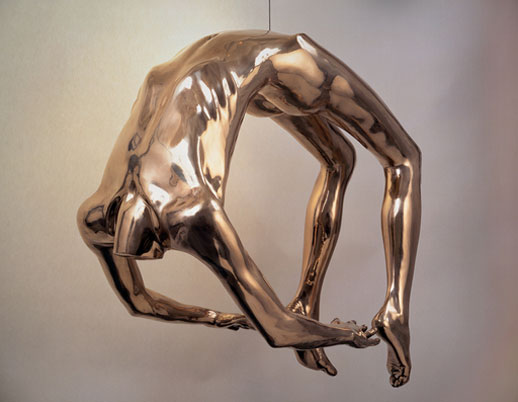Archive of the Avant-Garde
“Art of our Time” is a selected retrospective of the Japan Art Association’s “Praemium Imperiale” award. Launched in 1988 to commemorate the Association’s 100th anniversary, this year is a celebration of the prize’s twentieth year. The exhibition is divided into five categories — painting, sculpture, architecture, music and theatre/film — but the overall focus is on painting and sculpture.

Forty-one laureates were selected from past winners to create a show that provides a cross section of twentieth century and early twenty first century art. Featuring many well-known international artists such as Willem De Kooning, Gerhard Richter, Anthony Caro, Robert Rauchenberg and Christian Boltanski, it is a good opportunity to see a broad range of work. The exhibition is divided into five main areas; six if you include the pieces by Yayoi Kusuma displayed at the entrance. The first room is dominated by large paintings: Zao Wou-Ki’s Homage à Andre Malraux (1976), a three-paneled extravaganza of oil paint and Anselm Kiefer’s Die Meistersinger (1981 – 82), a cacophony of thick, scratched, bled, and encrusted oil paint mixed with sand over a photograph really stand out. Many of the paintings in this room reflect a recurring preoccupation with art as a means for gesture and expression through layered collage, such as Richter’s use of screen-printing and fabric. Other works such as Lee Ufan’s quiet Dialogue and Elsworth Kelly’s Red Yellow Blue IV (1966) are more meditative, making use of the canvas as a color field.
This years’ winner of the painting category is Richard Hamilton. The two “paintings” of his that are on display are in fact Iris Digital prints that have a soft painterly quality. Richard Hamilton is often connected with the early Pop art movement and since the 1970s he has been working with prints and blurring the boundaries between art and design. As the current recipient he reflects a broad 21st century interest in the possibilities of technology within formal dialogues around the act of painting. The Marriage (1988) depicts a Japanese couple in traditional wedding clothes set against the neutral grey of a photographer’s studio backdrop. It is a photo that looks like a painting of the act of sitting for a formal photograph that imitates a formal portrait.
The layout of the second floor exhibits works well as you move from the beautiful fabric works of Christo and Jeanne-Claude to wire mannequins dressed with Issey Miyake’s white sculptural “Colombe” dresses. Other featured sculptors include Max Bill, Eduardo Chillida and a video of the site-specific architectural pieces of Dani Karavan. The final room contains large paintings by Briget Riley, Lee Ufan, Yayoi Kusama, Georg Baselitz and Sigmar Polke. Despite the size of the canvases in a relatively small space they balance each other well and compliment the sculptures by Louise Bourgeois, Tony Cragg and Richard Serra. Bourgeois’ bronze Arch of Hysteria (1993) hangs limply, dominating the space with its smooth surface and headless, contorted beauty.
For contemporary art lovers this show will seem more historic than cutting edge. For fans of twentieth century painting and sculpture it is an impressive collection that includes many of the key players of the last century. Museum director Shuji Takeshita writes that while previous epochs were characterized by a discernable style, the twentieth century was “…characterized by a diverse process of opposition, conflict and co-existence between academic styles and the avant garde” This exhibition is indeed an archive of the avant garde and a reminder that all work is eventually both private property (all works have been donated from private collections in Japan) and historical artifacts from an influential past periods that have done much to shape contemporary practices.
Rachel Carvosso
Rachel Carvosso



